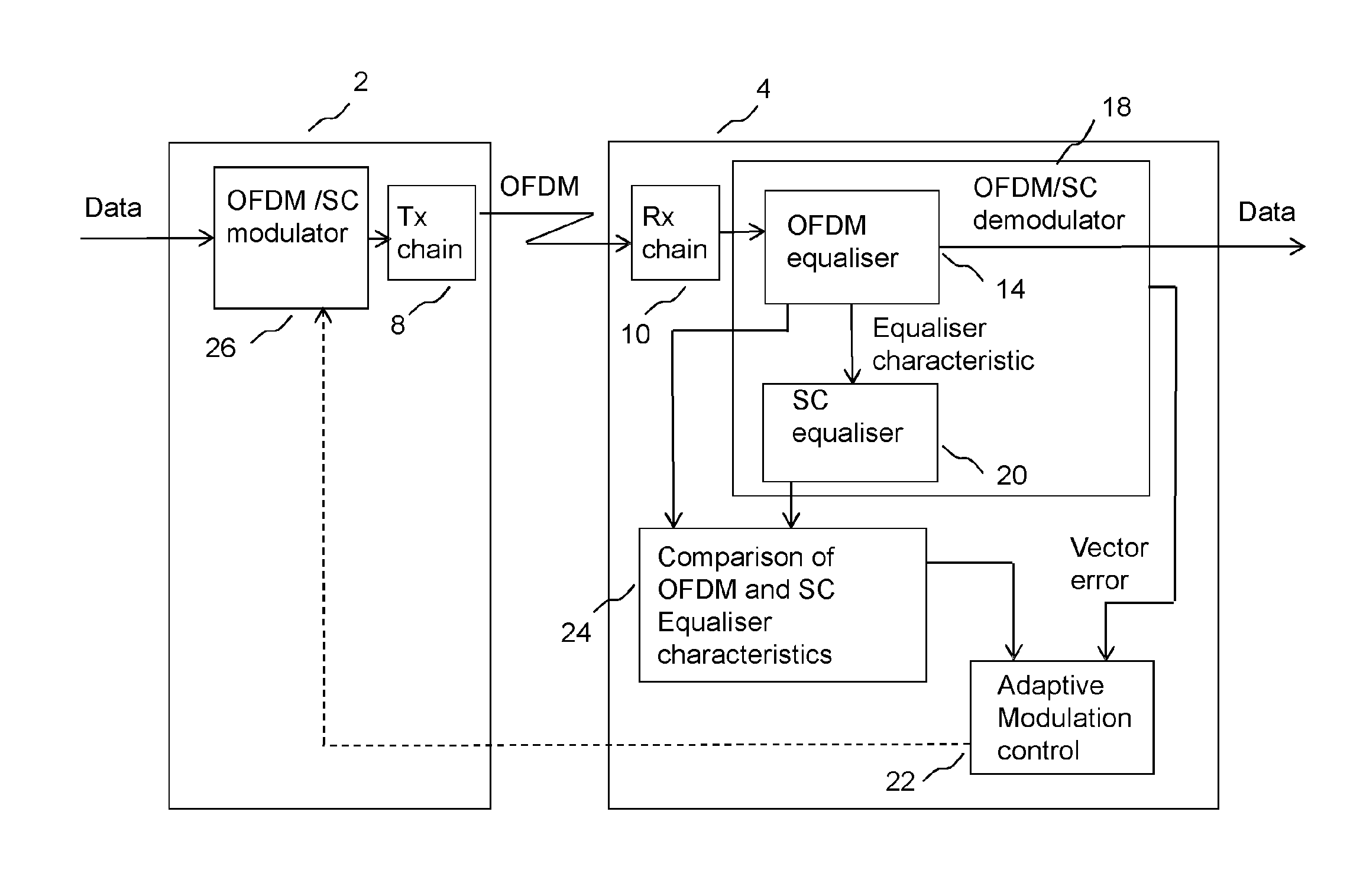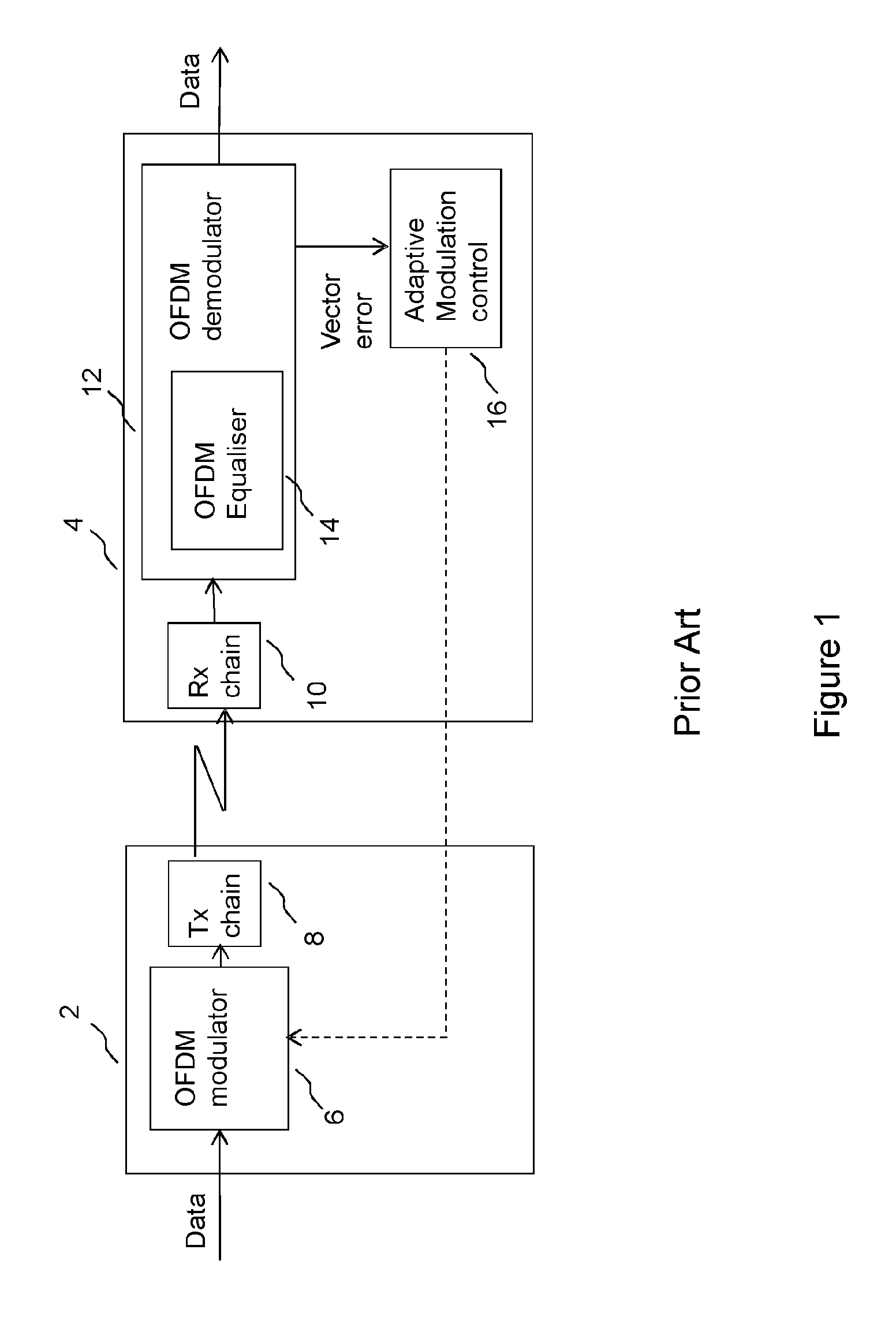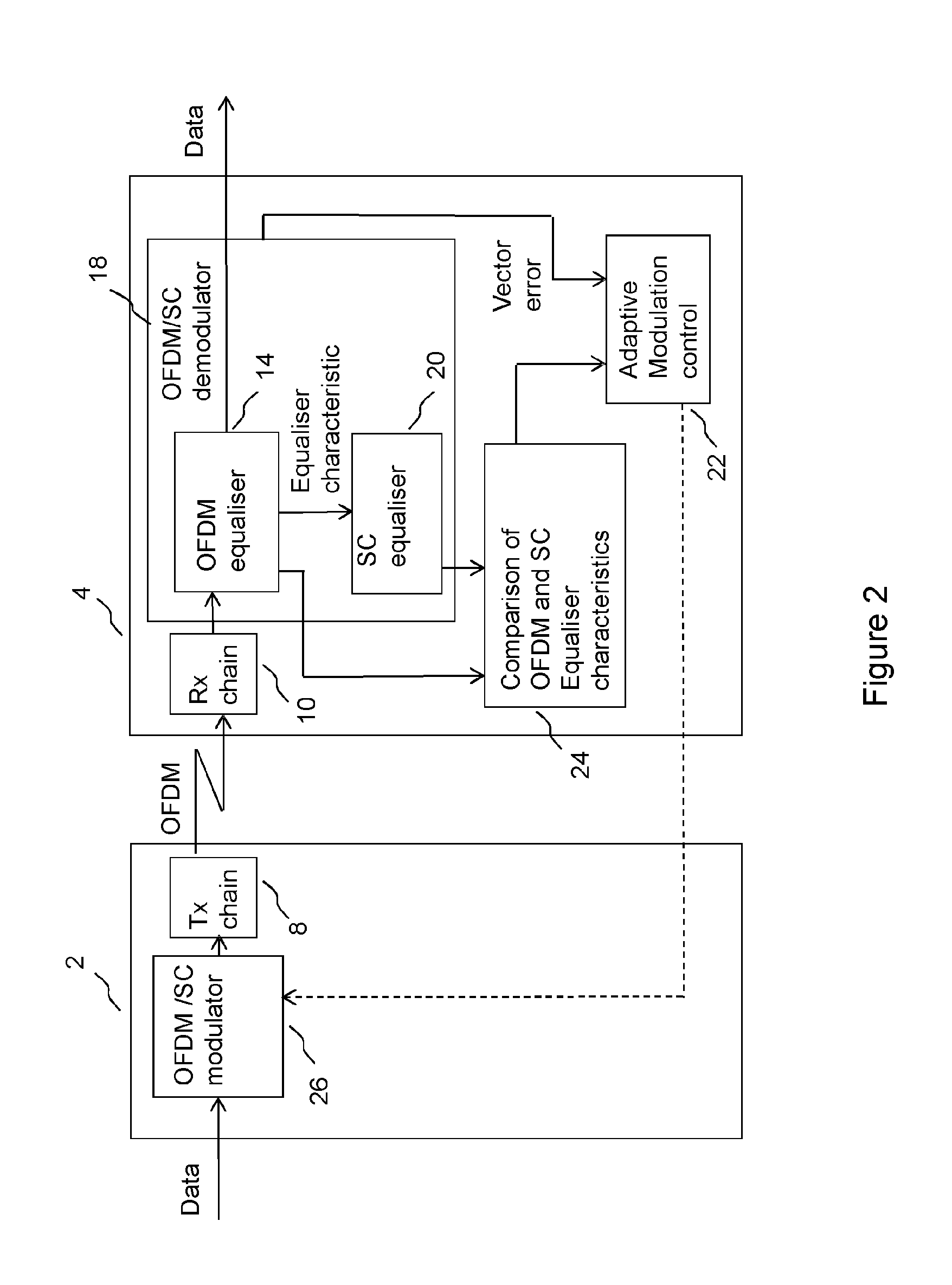Adaptive modulation
a wireless communication system and adaptive modulation technology, applied in the direction of link quality based transmission modification, transmission, transmitter/receiver shaping network, etc., can solve the problems of one mode of operation not providing a good indicator of the performance of the other mode of operation, and the modern wireless communication system is typically placed under potentially conflicting demands for high data capacity and high signal integrity
- Summary
- Abstract
- Description
- Claims
- Application Information
AI Technical Summary
Benefits of technology
Problems solved by technology
Method used
Image
Examples
Embodiment Construction
[0047]By way of example, embodiments of the invention will now be described in the context of a point-to-point broadband wireless communications system operating in unlicensed bands at approximately 5.4 and / or 5.8 GHz. However, it will be understood that this is by way of example only and that other embodiments may involve other wireless systems, and is not restricted to a specific frequency band of operation or a specific standard, and may involve point-to-point and / or point-to-multipoint systems for operation in licensed or unlicensed bands.
[0048]FIG. 1 shows an example of an adaptive modulation system for operation in a wireless communication system operating according to a number of OFDM modes. A first transceiver 2 transmits an OFDM signal through a radio channel for reception at a second transceiver 4. In FIG. 1, the signal path is shown from the OFDM modulator 6 of the first transceiver, via a transmit (tx) chain 8 and a radio propagation channel, which may be line of sight o...
PUM
 Login to View More
Login to View More Abstract
Description
Claims
Application Information
 Login to View More
Login to View More - R&D
- Intellectual Property
- Life Sciences
- Materials
- Tech Scout
- Unparalleled Data Quality
- Higher Quality Content
- 60% Fewer Hallucinations
Browse by: Latest US Patents, China's latest patents, Technical Efficacy Thesaurus, Application Domain, Technology Topic, Popular Technical Reports.
© 2025 PatSnap. All rights reserved.Legal|Privacy policy|Modern Slavery Act Transparency Statement|Sitemap|About US| Contact US: help@patsnap.com



